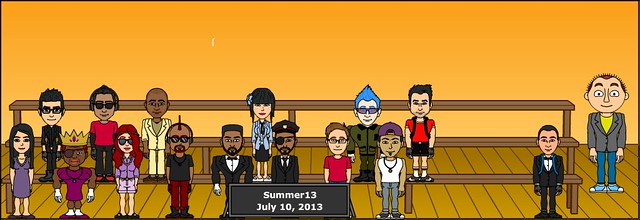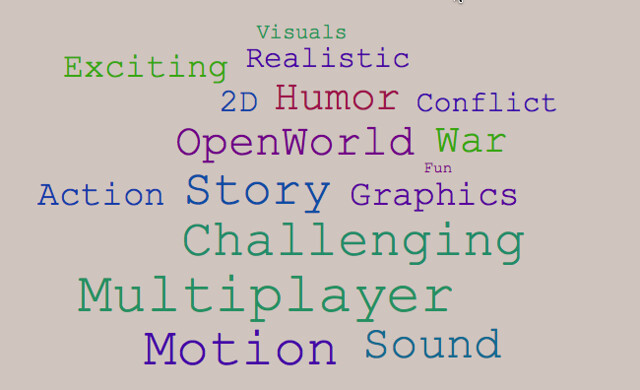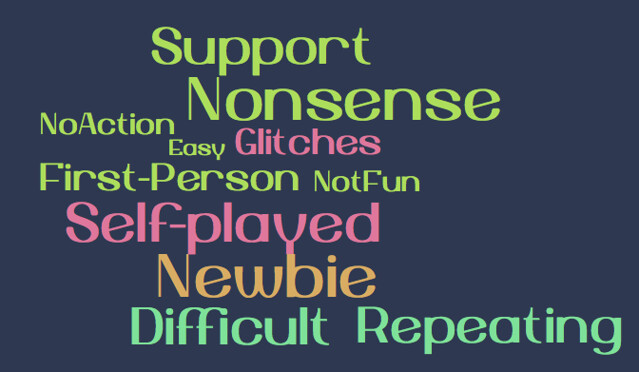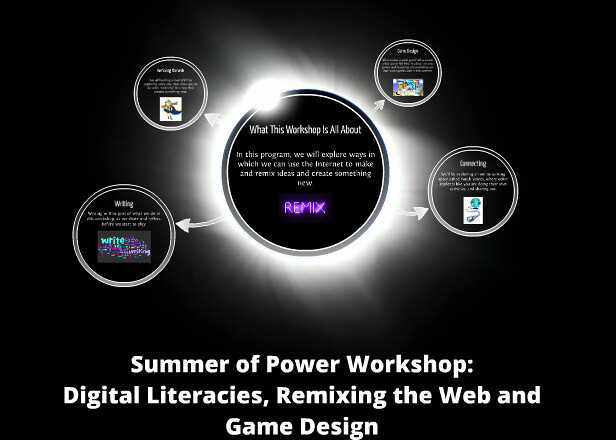from Tedx:
Peace (in the frames),
Kevin
Collecting Video Vines Together
I know this is probably obvious to others, but I discovered that all of the short Vine videos I had been making as part of the Making Learning Connected MOOC were not just online at Vine, but also were sitting as files in my Video folder on my iPad. So, I took them, popped them into the iMovie App, and created a larger (which is relative, given the size of Vine videos) video collection. It’s kind of odd to see them all together, though.
Peace (on the vine),
Kevin
Book Review: You
Novels about video games often run the risk of being too immersed in the gaming culture to establish a solid story, or they go the other way and become so little about the game that the story never connects.
Austin Grossman’s novel, You, mostly avoids those pitfalls as he weaves a story of a game design company with an interesting backstory. The narrator, a childhood acquaintance of the founders of Black Arts gaming, has come back for a job as a game designer after failed attempts to find a foothold in life. The company is on the edge of ruin, taken over by a investor looking for quick profits, and the company’s glory days are far behind it now, with the death of one its visionary programmers and the exodus of a senior partner.
Oh, and a nasty bug is loose in the game worlds, and it may very well destroy the virtual universe created by the company. Also, through some crafty programming and marketing that led the company to build software for e-trading, the bug may very well precipitate a financial Black Monday on Wall Street, too. These plot points move the book along, and Grossman’s experience in the game design field is evident. But is the human stories told here, of various characters as the narrator, Russell, remembers what it was like to be part of this group of young outcast high school Dreamers who wanted to change the world, and saw their chance with video game design.
There were some scenes when I started to lose the thread, particularly when Russell gets visited by the four archetypes of heroes from the games he is playing (in order to find the bug, which creates sword that destroys everything) and designing (Russell is the lead designer for a new game). But mostly, Grossman keeps the story moving forward, and the enigma of Simon, a character who has died but whose legacy infects everything in the company, the game and the book (including the creation of the bug) is intriguing, and I wish there were more about him. But maybe Simon as a mystery is part of what drives the narrative here.
You works as a novel, and a primer on the inside of a game design company.
Peace (in the pages),
Kevin
Making Avatars in a Webcomic Classroom

In the summer workshop for high school English Language Learners, we’ve been talking a lot about digital literacy and online identity, particularly about avatars. This concept of representing oneself will come back around as we move into video game design, too, and yesterday, after viewing a fascinating New York Times slideshow that features portraits of people and their avatars, I brought our students up into Bitstrips for Schools.
One of the first tasks in Bitstrips is to create an avatar for use in the site, so it ties in perfectly to what we had been discussing. And the webcomic space is very user-friendly, even for struggling writers. Today, I will give them an overview around how to create a comic in Bitstrips. But as they were working on their avatars, I kept refreshing the homepage of the site, showing how their representations of themselves were populating the “classroom.” They got a kick of that, shouting out to refresh the page.
Take a look at the class picture and you get a sense of the students I am working with this summer. (A few students were absent or are still working, which is why there are some blank spaces).
Peace (in the comic),
Kevin
The MOOC Meme Collaboration
For the past few weeks (more in past weeks than in recent weeks), fellow explorers in the Making Learning Connected MOOC have been making memes about what we are doing. Here is the full collection (so far), created in Google Drive as an example of collaboration:
Peace (in the meme),
Kevin
Game Design: the Good and the Bad
In the digital literacies workshop I am co-leading for English Language Learner high school students this summer, one of the focus areas and an overall thread will be game design. Yesterday, in our first real meeting with students, we led a discussion around what makes a game fun to play and what makes a game boring to play. As I have done with other groups in the past, I took their ideas and put them into a word cloud.
It might be interesting to dig up the other word clouds from other groups of kids, and compare some of the themes of ideas.
Peace (in the thoughts),
Kevin
Hacking Tic Tac Toe into Tic Tac KaBoom
Today, in a workshop that I am leading for high school students, I am going to walk through some basic elements of game design, which will lead to an activity around hacking the game of chess. First, though, we’re going to simpify things by reworking the classic game of Tic Tac Toe as a way to demonstrate how adding elements to the system of the game add to the complexity of the playing of the game. I’m going to share the hacked version of the game that I developed, with advice from my 8 year old son, called Tic Tac KaBoom.
Here is what it looks like:
Tic Tac KaBoom by KevinHodgson
Peace (in the hack),
Kevin
NEA Policy Statement on Digital Learning
The National Education Association (NEA) has put out a policy statement related to digital learning. (Thanks to Troy Hicks for forwarding the link) You should read it yourself but here are some sentences that jumped out at me as I read through it:
All students—pre-k through graduate students—need to develop advanced critical thinking and information literacy skills and master new digital tools. At the same time, they need to develop the initiative to become self-directed learners while adapting to the ever-changing digital information landscape.
The appropriate use of technology in education—as defined by educators rather than entities driven by for-profit motives—will improve student learning, quality of instruction, and education employee effectiveness, and will provide opportunities to eradicate educational inequities.
We as a nation must address the issues of equity and access in a comprehensive manner in order to see the promise and realize the opportunities that digital learning can provide.
Teachers need access to relevant training on how to use technology and incorporate its use into their instruction, ESPs need access to training on how best to support the use of technology in classrooms, and administrators need training to make informed decisions about purchasing equipment, technology use, course assignments, and personnel assignments.
As different digital tools are created and used, the impact of technology on traditional socialization roles must be considered. The face-to-face relationship between student and educator is critical to increasing student learning, and students’ interactions with each other are an important part of their socialization into society.
What do you think of the statement? I think it covers a lot of ground, but mostly through the eyes of a labor group (I know, that’s what NEA is, and I am a member). I see this document in partnership to others emerging from other groups, such as NCTE, around the learning of and the teaching of digital literacy.
Peace (in the sharing),
Kevin
My Credo: I Believe in Change and Collaboration
For this Make Cycle in the Making Learning Connected Massive Open Online Collaboration (MOOC), Terry Elliott and I are asking folks to explore their beliefs and credos around the principles of Connected Learning. These include the values inherent in the principles, the issues of equity and access, and participation in the networks. That’s a lot of ideas to grapple with, but Terry’s blog post — which you can read here — gives a nice “map” of how one might go about doing that.
For me, I turned to the “This I Believe” podcasting idea, writing a short essay as I thought about how what I believe in coincides with the principles of Connected Learning. I then decided to create a VoiceThread, opening up my beliefs to others to add to, comment on, or share their own beliefs and credos. I recorded the audio in Audacity, first, and then imported the file into my Voicethread (in case you are wondering). The image is a word cloud of my text. I used Word It Out to create the cloud.
I invite you, too, to add to the thread (you need an account, and then you can click on “comment” to add your voice, text and more).
And tonight (Monday), we are hosting a live “Make with Me” session on Google Hangout with Chris Lawrence, of the Mozilla Foundation, and co-MOOC facilitator Chad Sansing to talk about credos, beliefs and more. (Hangout happens from 8-9 p.m Eastern (5-6 p.m. Pacific/ 6-7 p.m. Mountain/ 7-8 p.m. Central and it will be embedded at the MOOC, along with a chat program that is open to anyone.)
Peace (in the credo),
Kevin
First Day Jitters: Digital Literacies Workshop for HS Students
I haven’t written much about this, since I have been knee-deep in the Making Learning Connected MOOC, but today is the first day of a five-week workshop program I am leading for high school students around digital literacies, remixing the web and game design. I’m a little jittery. You know that feeling? My workshop is part of a partnership between the Western Massachusetts Writing Project and a local urban school district, which got a big grant to offer up a comprehensive program to support English Language Learners this summer. There are tutorial sessions, group activities, work programs and workshops in this Summer of Power program.
I am one of the workshop leaders. Along with a WMWP colleague, who has expertise in ELL, I am going to have these high school students explore the digital worlds from a couple of angles — first, through creating avatars to represent themselves in a webcomic space and beyond; then into remixing websites with the Mozilla Webmaker tools; and then into video game design with Gamestar Mechanic. Meanwhile, I am weaving in game design from the very first week (tomorrow, we hack the game of Chess, for example). Writing will be at the heart of what we are doing — from writing in and out of the day, to storyboarding projects, to reflecting on the experience and possibilities. I am working to line up some outside visitors, too, from the field of computer programming and video game design, and I am reaching out to the Mozilla folks, too.
I don’t know the students, and I have not worked much with high school students, and the language barriers are somewhat of an unknown. Yet today, I have to give an elevator speech (15 minute presentation) six times, to six different groups of students, as they will be deciding which enrichment workshop they want to attend. I am using Prezi to present my overview, but I decided to start with a non-threatening quiz — showing icons from the gaming world and I’ll ask if they recognize them (we’ll be using a lot of visual clues this summer). There is one outlier in the mix (Mr. Monopoly) who does not originate from a video game. We’ll see if they can pick him out of the lineup.
What has me on nerves, though, is not the students, so much. Since this is not my school, I worry about the infrastructure of technology and whether things will work as I need them to work, and what kind of support I will get when they don’t. I did visit the lab last week, checked out the computers, and found a few upgrades that needed doing. The teacher there is fantastic, and she got to work on the upgrades even as I was leaving the lab. She wants it to run smooth. That’s a great sign.
I’ll let you know how it goes …
Peace (in the pitch),
Kevin




